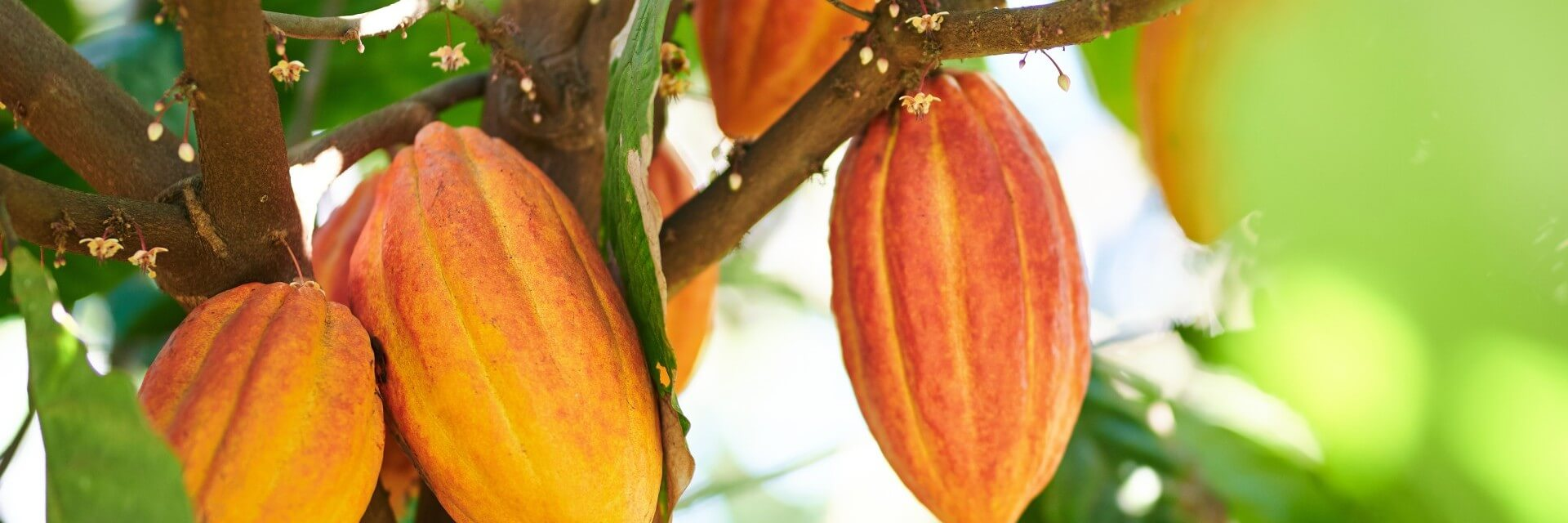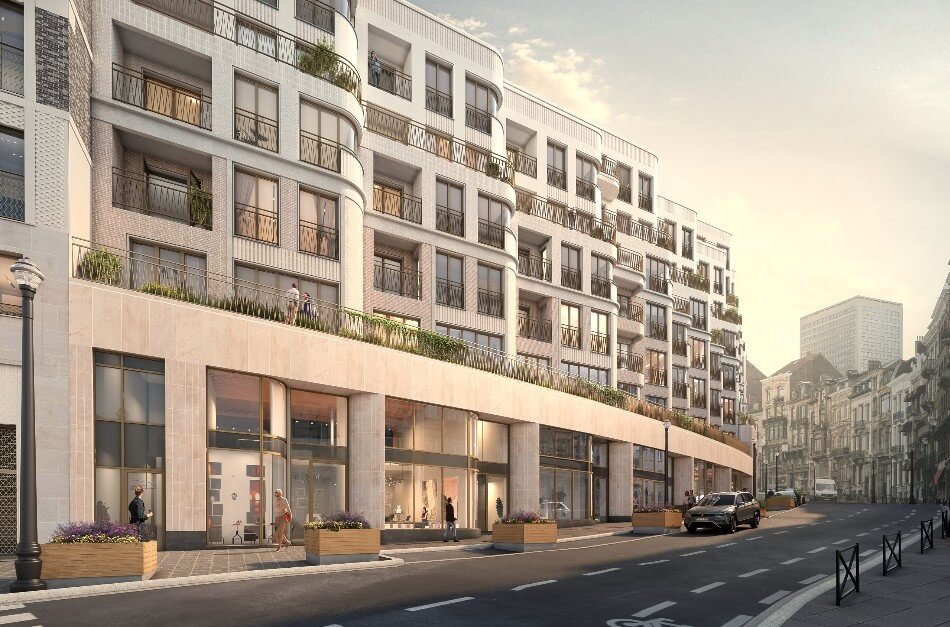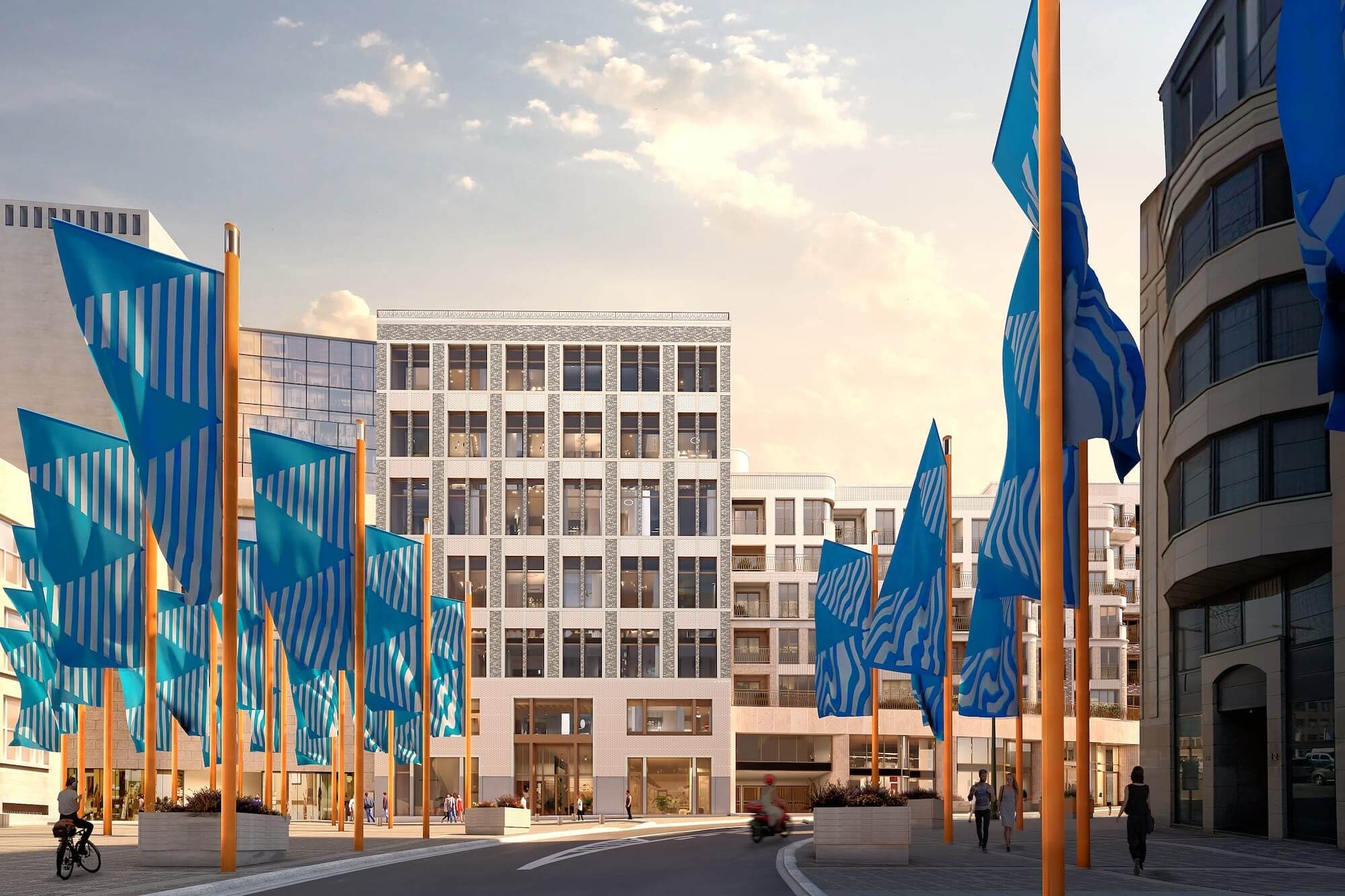
The Lebeau project

Our street will be completely revamped within the next months.
The project will help to bring life back into our street.
It meets the current technical specifications and regulations in place.
Near the Mont des Arts, the Place Royale, the Rue de la Régence and the Jardin des Sculptures; our store is located in the heart of our capital: the Sablon area. This district, steeped in history, deserves to be highlighted even more by offering a complex made up of buildings which will bring it to life. To do this, The owner, Immobel, wants to transform the monofunctional complex facing our store into a welcoming space, for dwelling, working and living, which is full of life 24/7. This project is the result of a combination of suggestions from local residents, the authorities and other stakeholders. It involves renovation and environmental initiatives and protection of local heritage. All these measures have a common goal: to enhance this district which is full of potential whilst also taking its residents into account.
A project in consultation with local stores and residents
The new project takes into account the comments made during the consultation committee in November 2022. The various residents’ associations had the opportunity to talk with public authorities to offer their thoughts on the project. These discussions were then translated into clear recommendations produced by the public authorities. These recommendations were added in full to the new version of the Lebeau project. In practical terms, this included the existing skyline of the buildings had to be respected and an increase in the degree of renovation. The discussions with the people involved in the project were a real learning curve and helped improve the project. By rethinking the Lebeau project and its interactions with public areas, the project will have a sustainable legacy centred on current and future local residents. This living, human-focused, mixed project will restore a strong and qualitative link between the upper part and the lower part of the city and will restore the connection between the lively Sablon district and the Grand-Place area.

Overall, more than 75% of the buildings will be preserved and renovated, i.e. four out of five buildings (Justice, Ruysbroeck, Sablon and Paille). This not only reduces the carbon footprint of the work but also preserves the site’s heritage. Renovation allows us to preserve the characteristic features of the complex and enhance what already exists, rather than starting from scratch. Regarding the Lebeau building, several internal studies show that it is sadly not possible to renovate them. This is due to problems regarding the installation of vertical routes, the addition of terraces and the excessive and inefficient volume of the buildings. The new building will fit in well with its surrounding. As much of the existing materials as possible will be recycled in the interests of limiting the construction site’s CO2 emissions. This conforms to the promoter’s environmental policy.
The total surface areas and volumes of this new project are lower than the current complex in order to provide a lower building density (from 36,945m2 to 35,936m2 of surface area). No building will exceed the height of existing buildings. The Place de la Justice will only be in shade in the mornings, while the houses on rue Lebeau and the Place de la Justice will not lose out on any sunlight throughout the day. Every aspect has been studied in the most minute detail to prevent any disturbances and, above all, to transform and revitalise the Place de la Justice and Ruysbroeck. Regarding the Lebeau building, the upper floors will be set back from the road to enable more natural light through onto rue Lebeau. The new commercial area at the base of the building will also ensure a better interaction with the public space.

The project also includes a dimension of co-creation. In other words, Immobel wants to involve local residents in the project design process and in the redevelopment of public space. In addition, unoccupied commercial spaces have accommodated different types of shops in order to better gauge the expectations of consumers in the neighbourhood. In fact, several initiatives have already emerged, such as a plant shop, a circular clothing shop and an experimental cultural area. This helps support the economy and local entrepreneurs. The objective of these approaches is to adapt public and commercial areas to the district’s needs.
To find out more about the Lebeau project, please visit this dedicated website.


